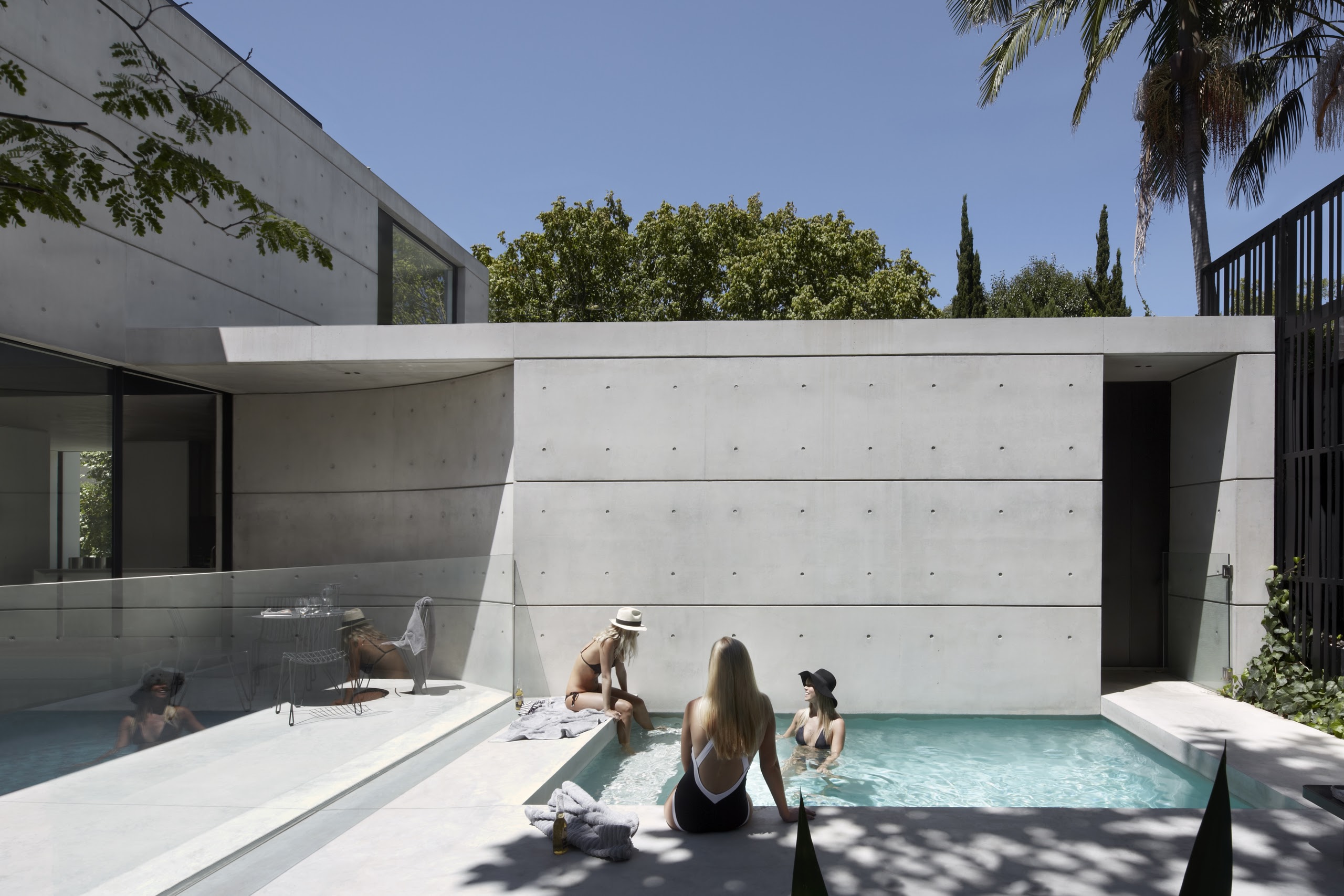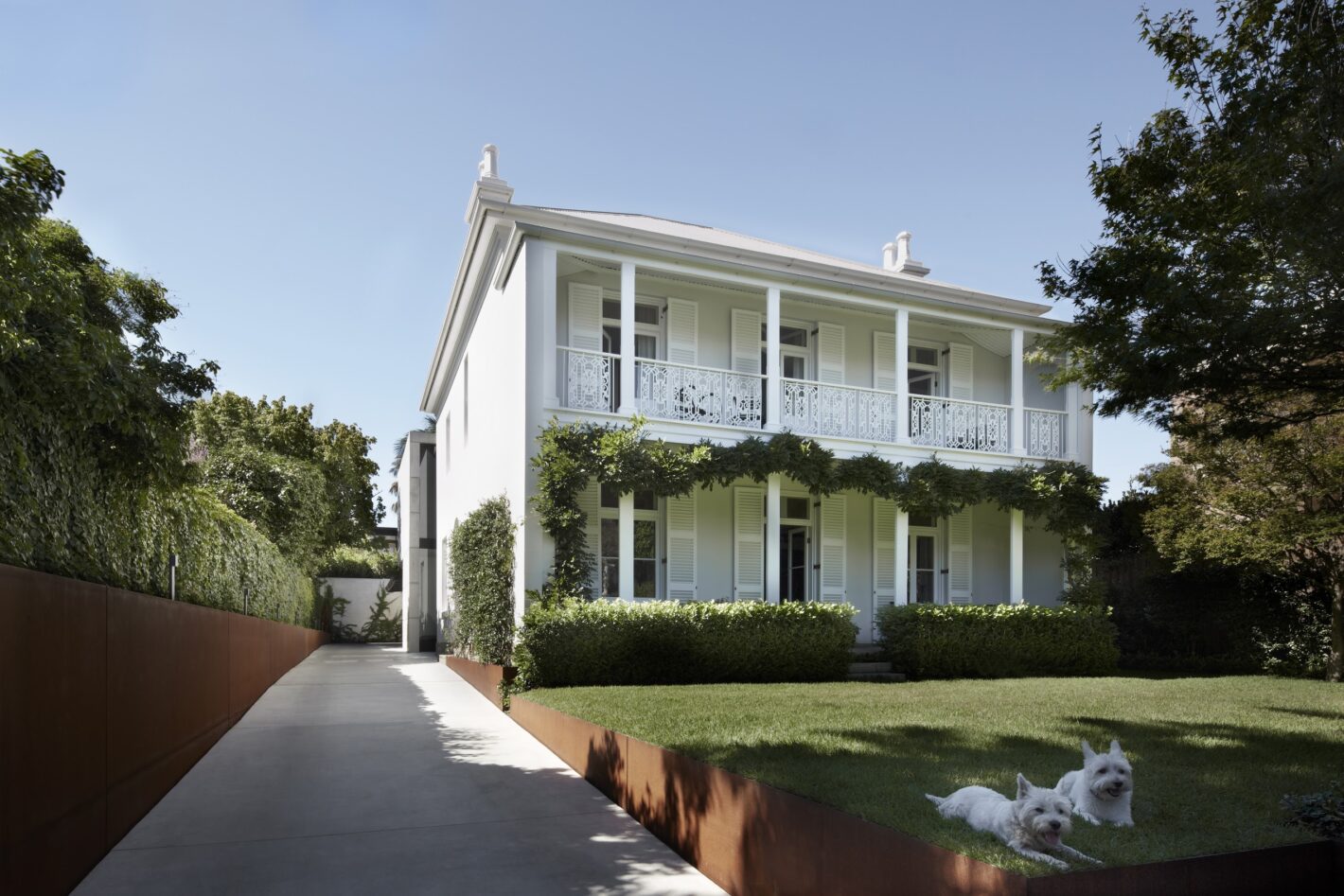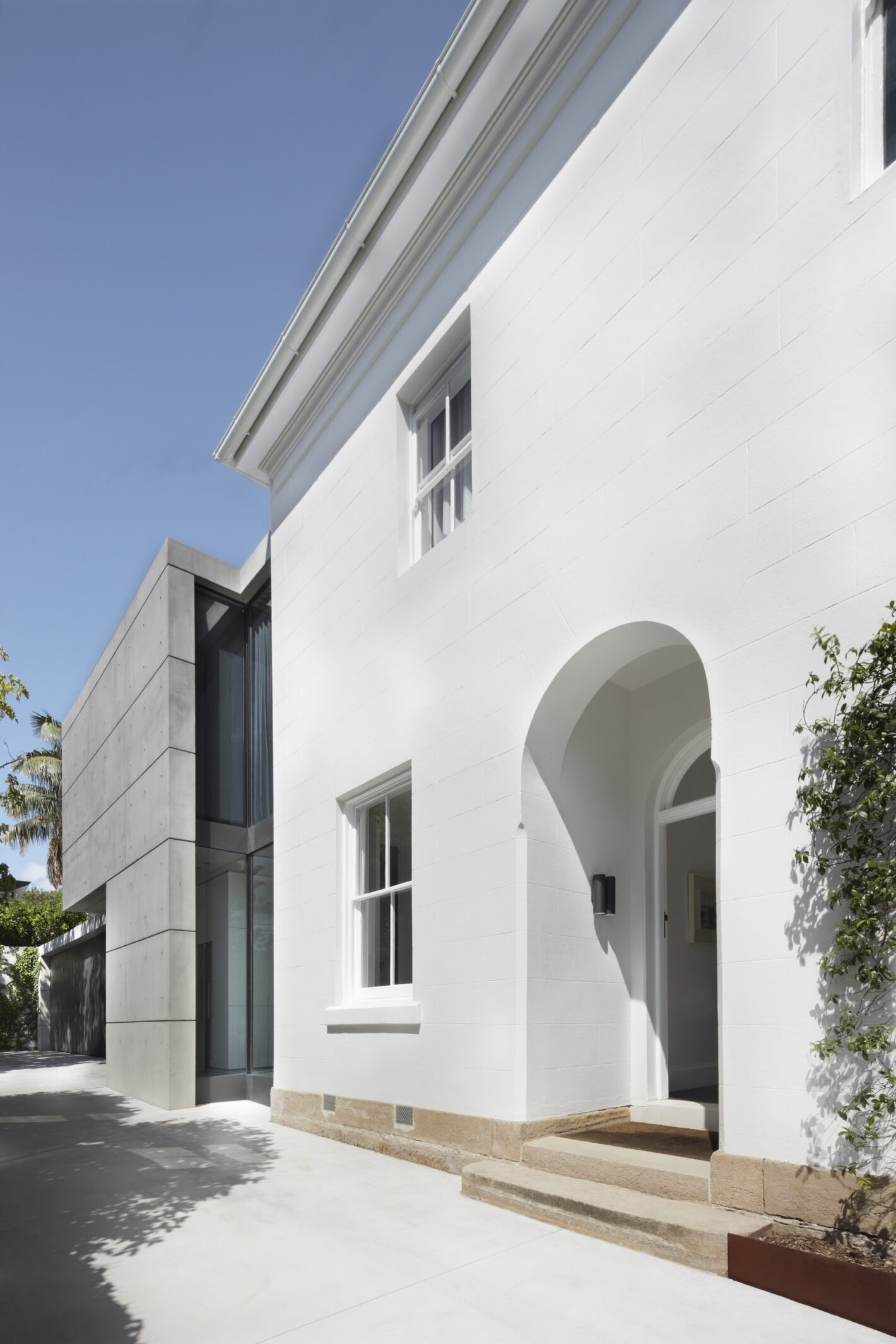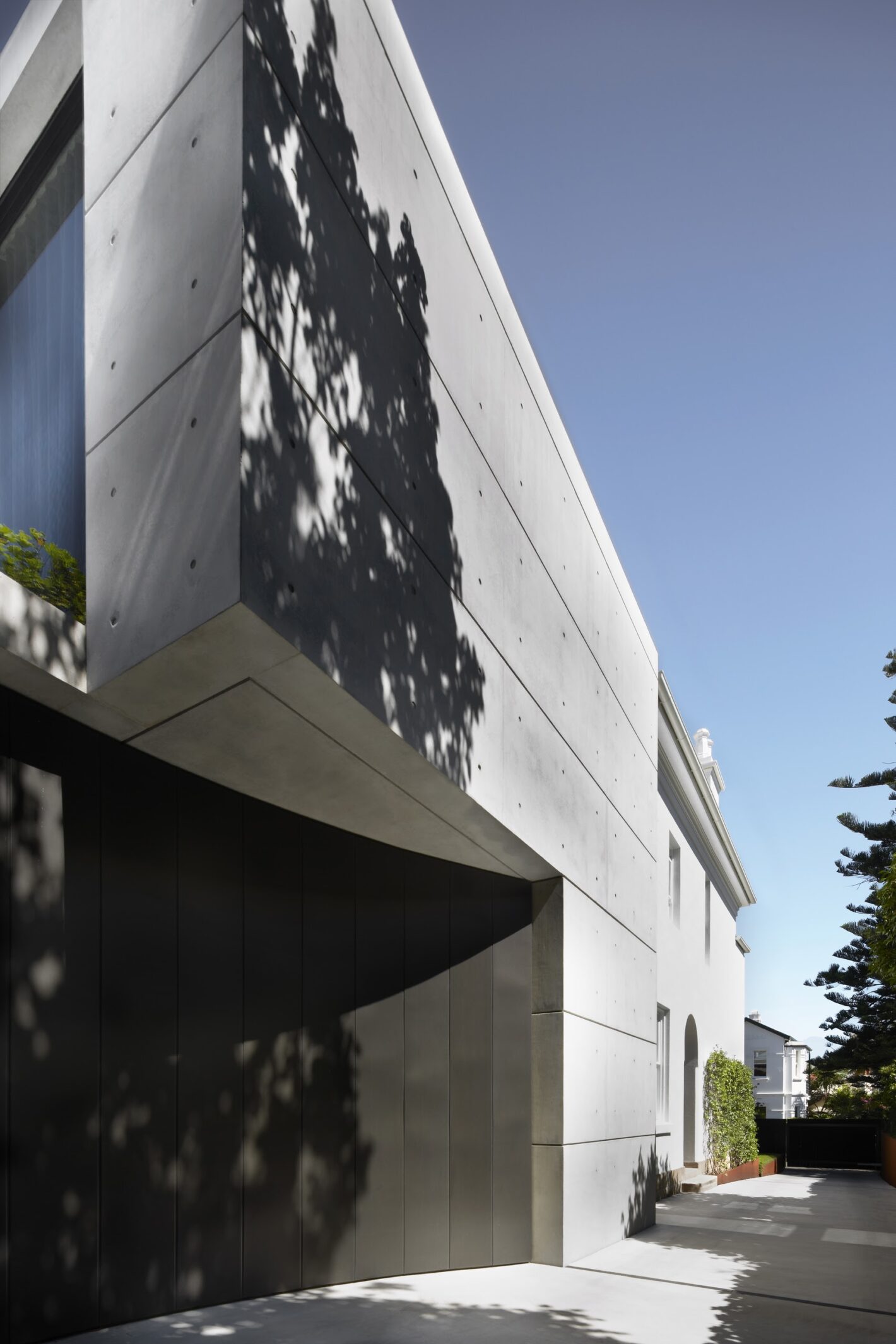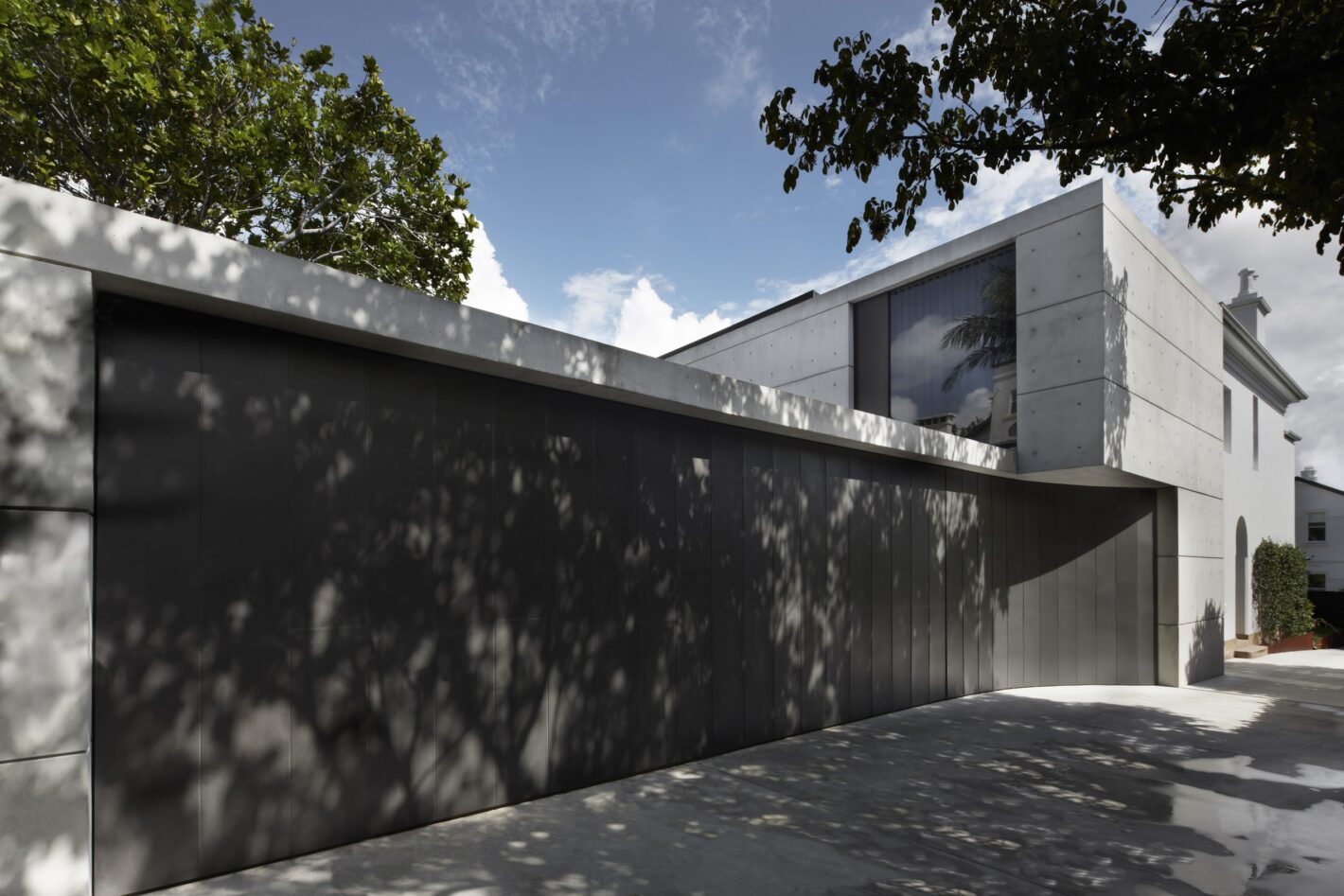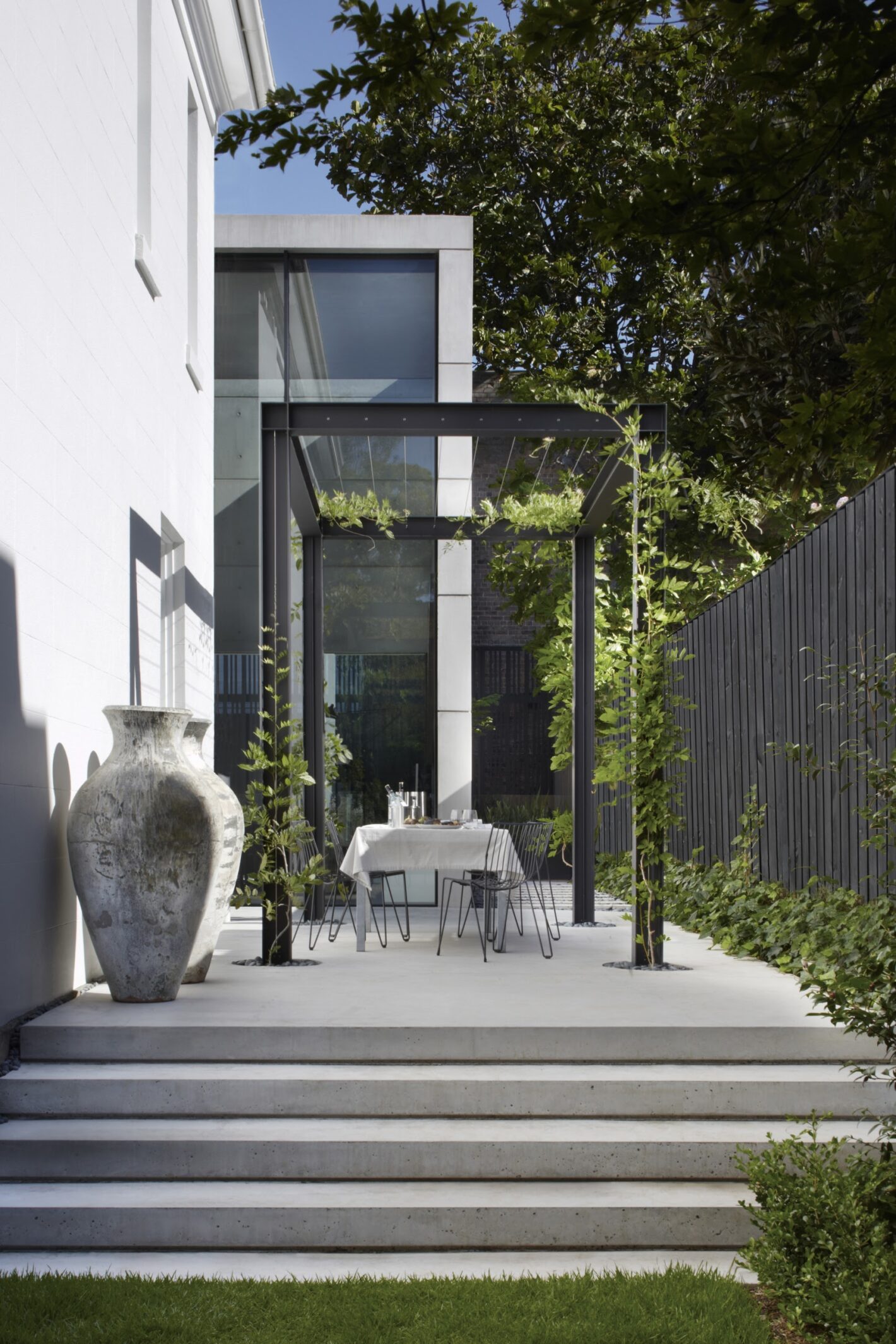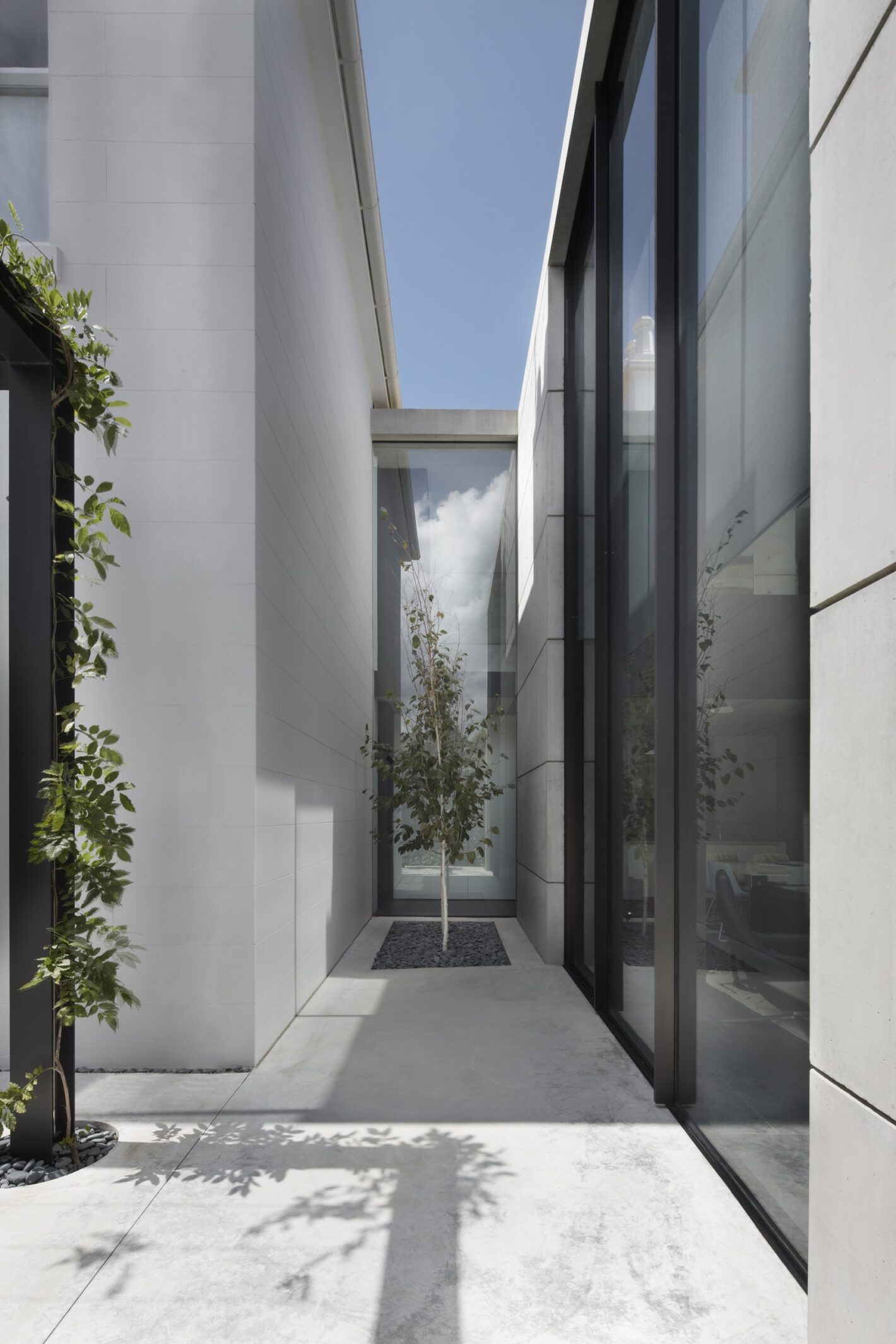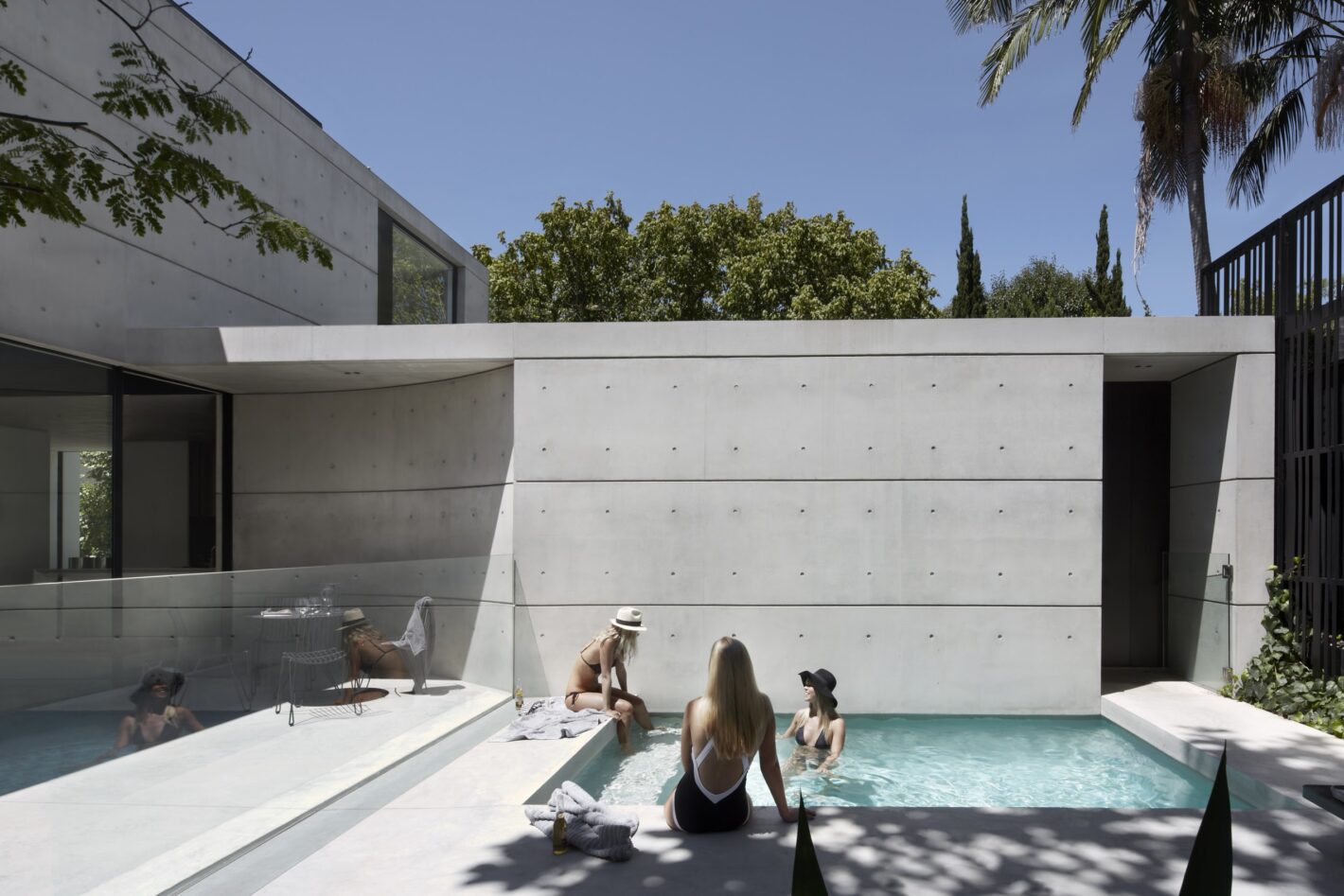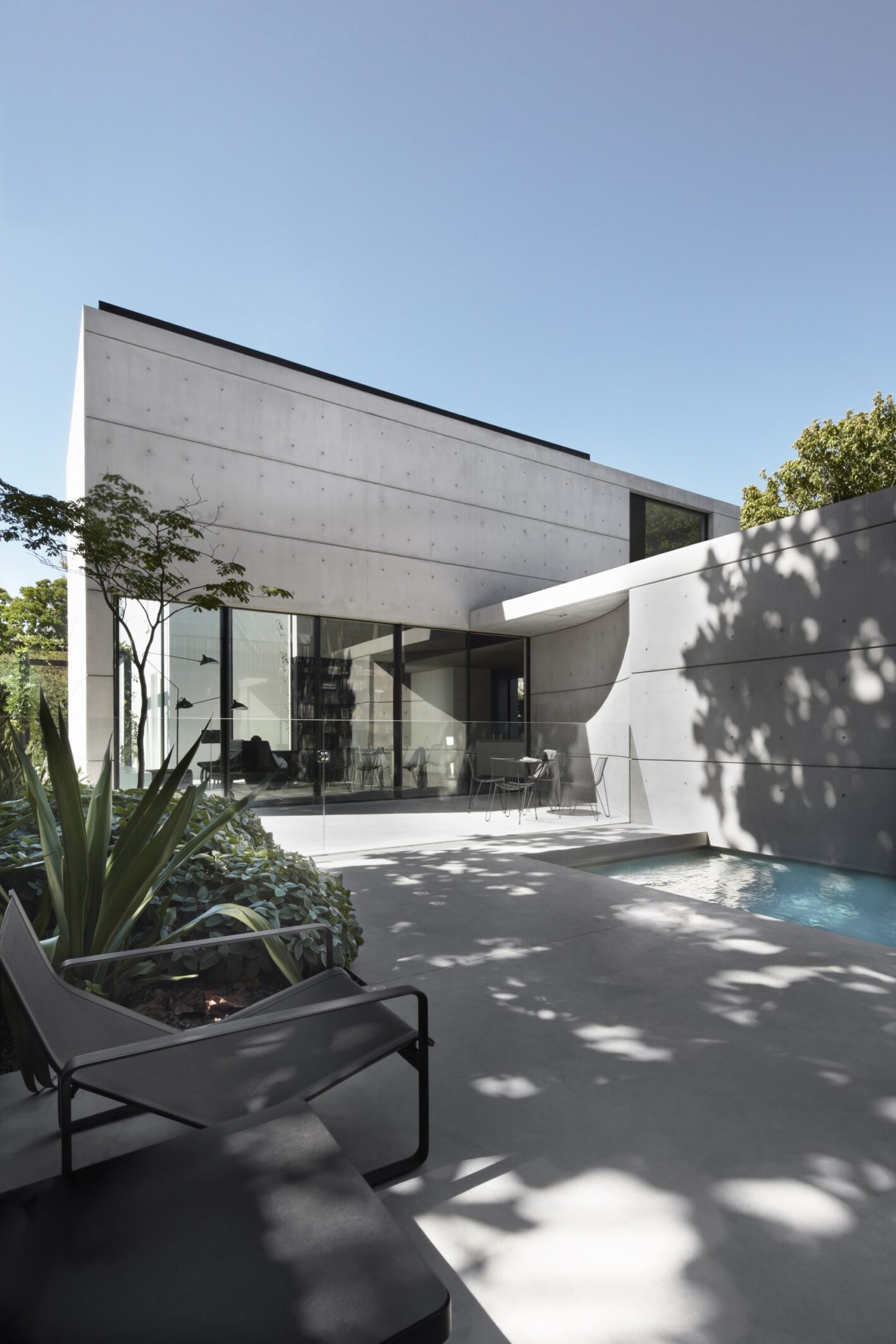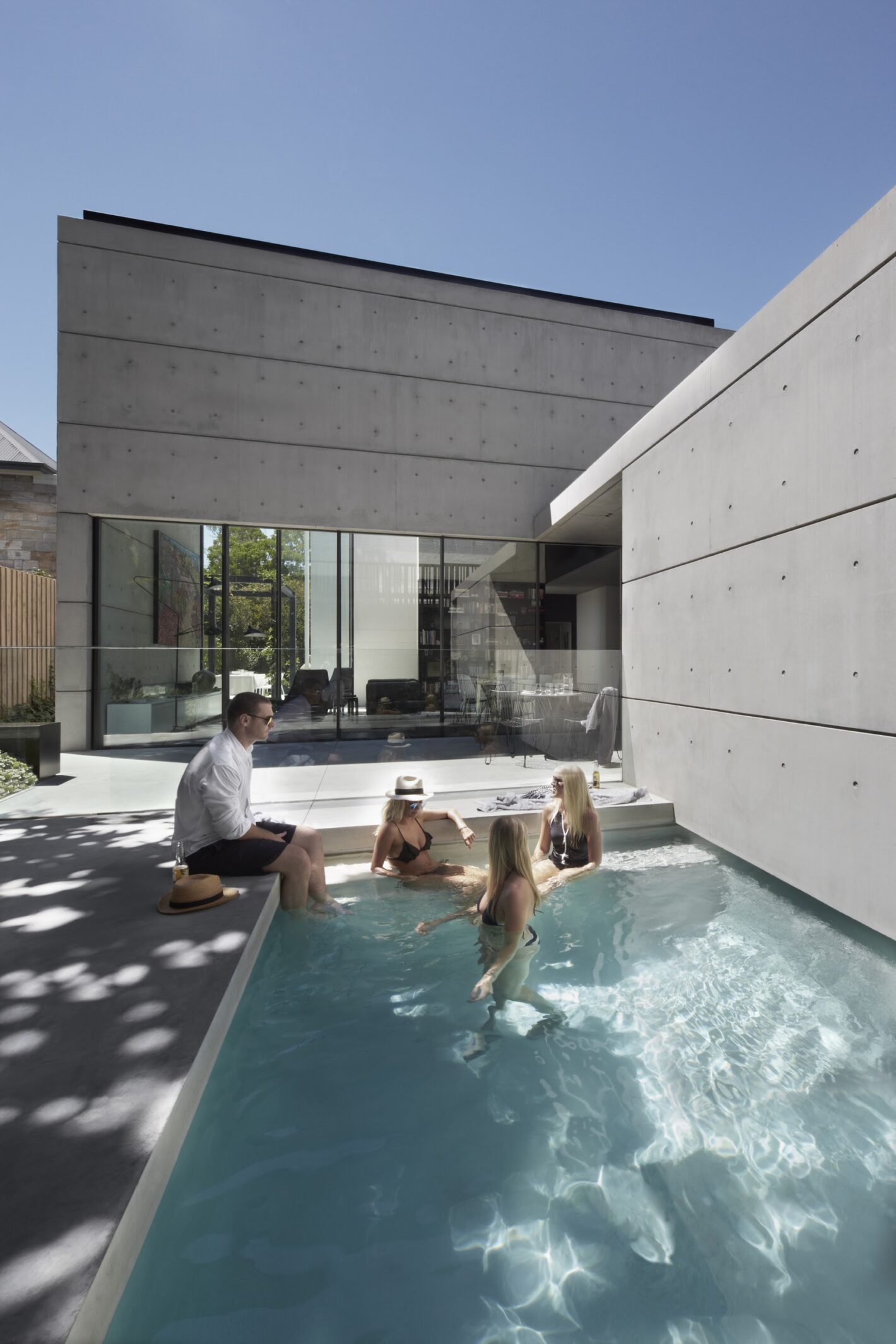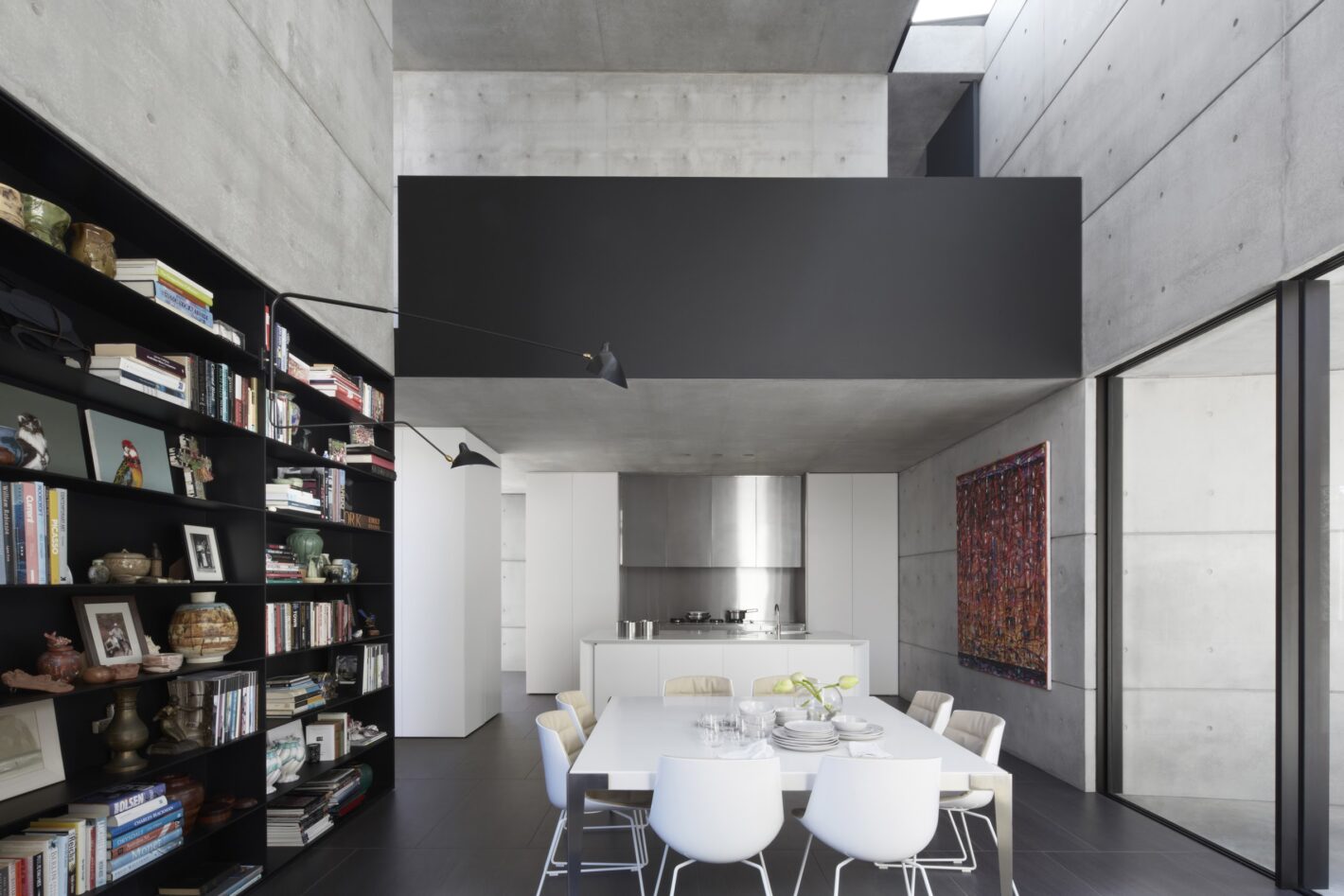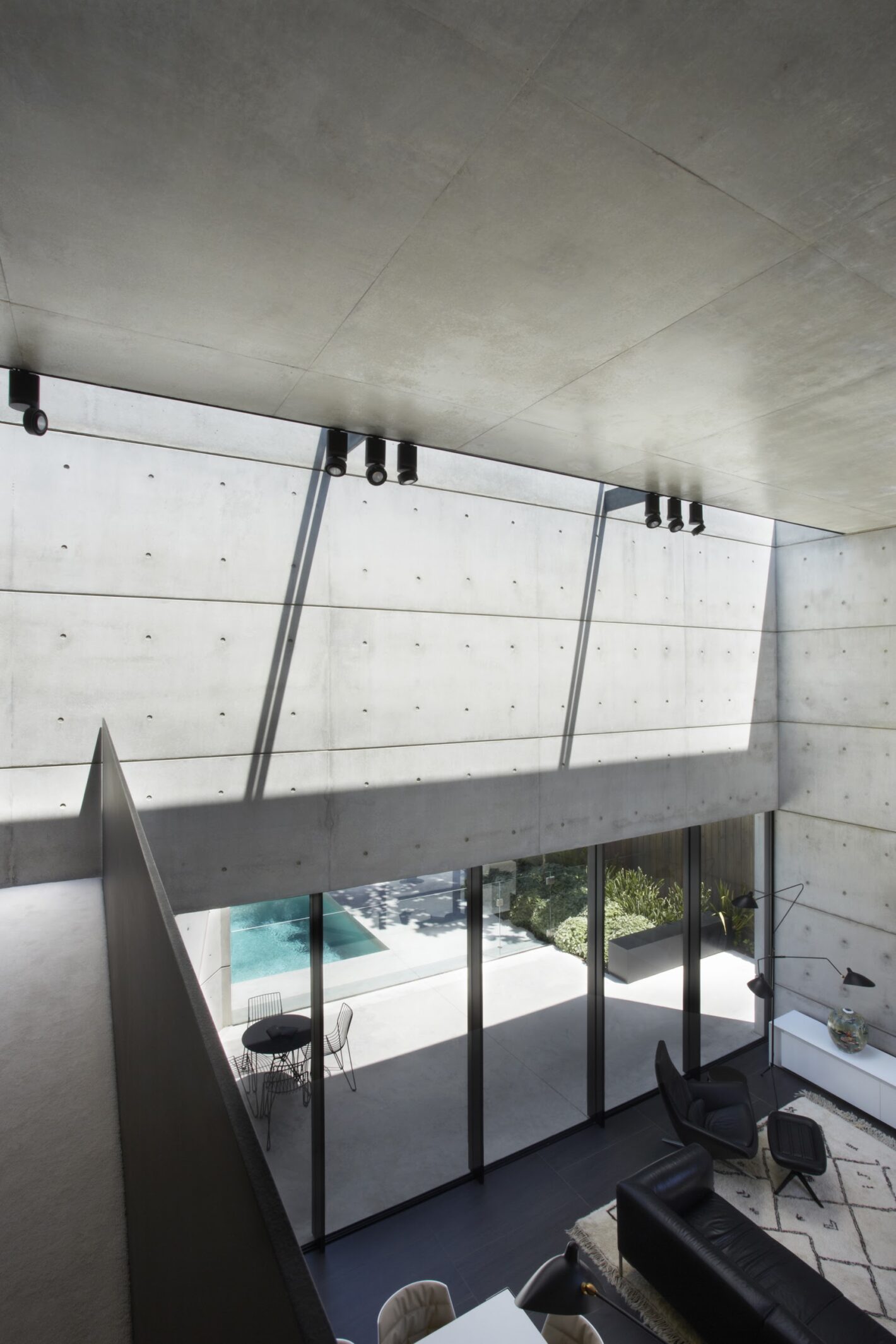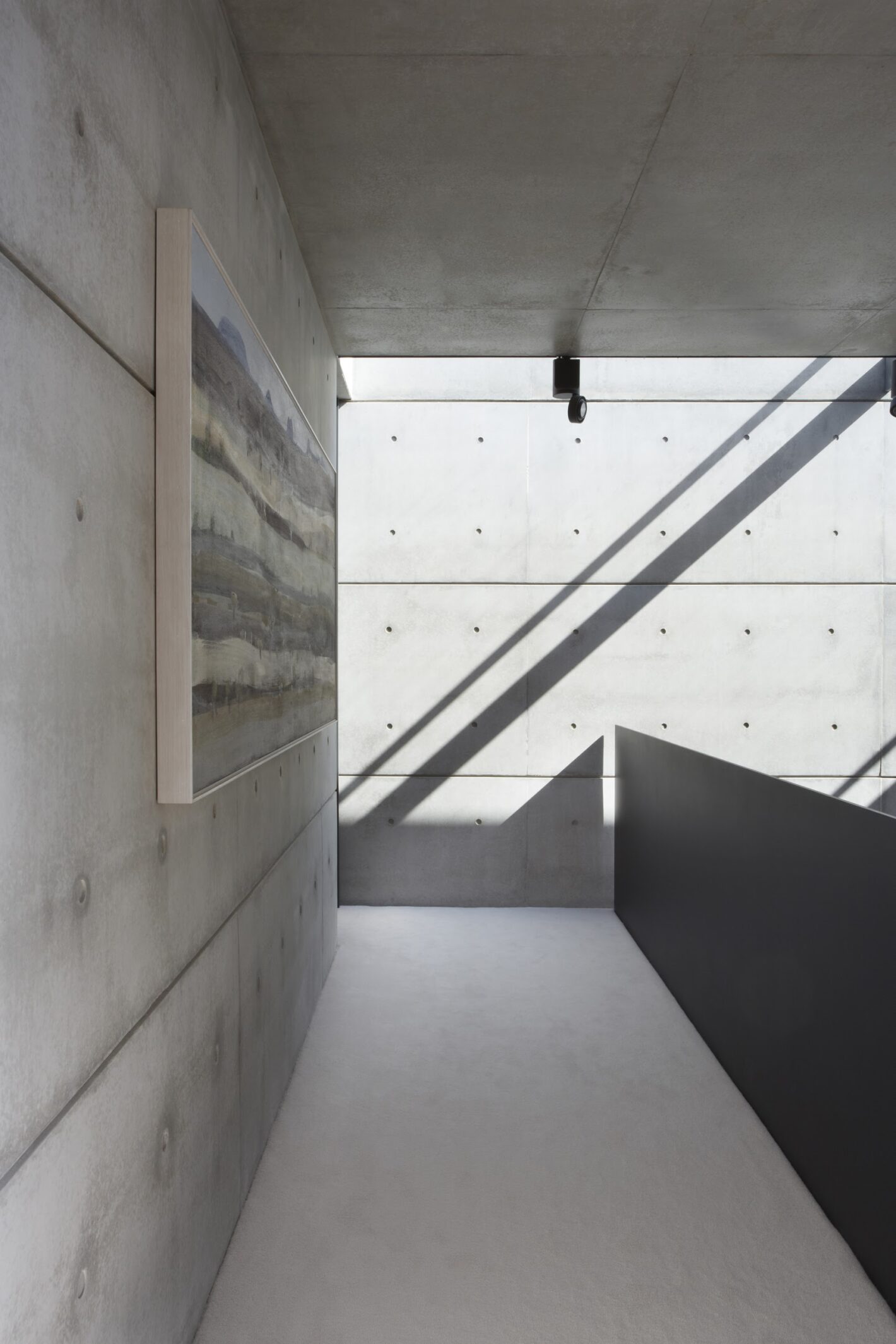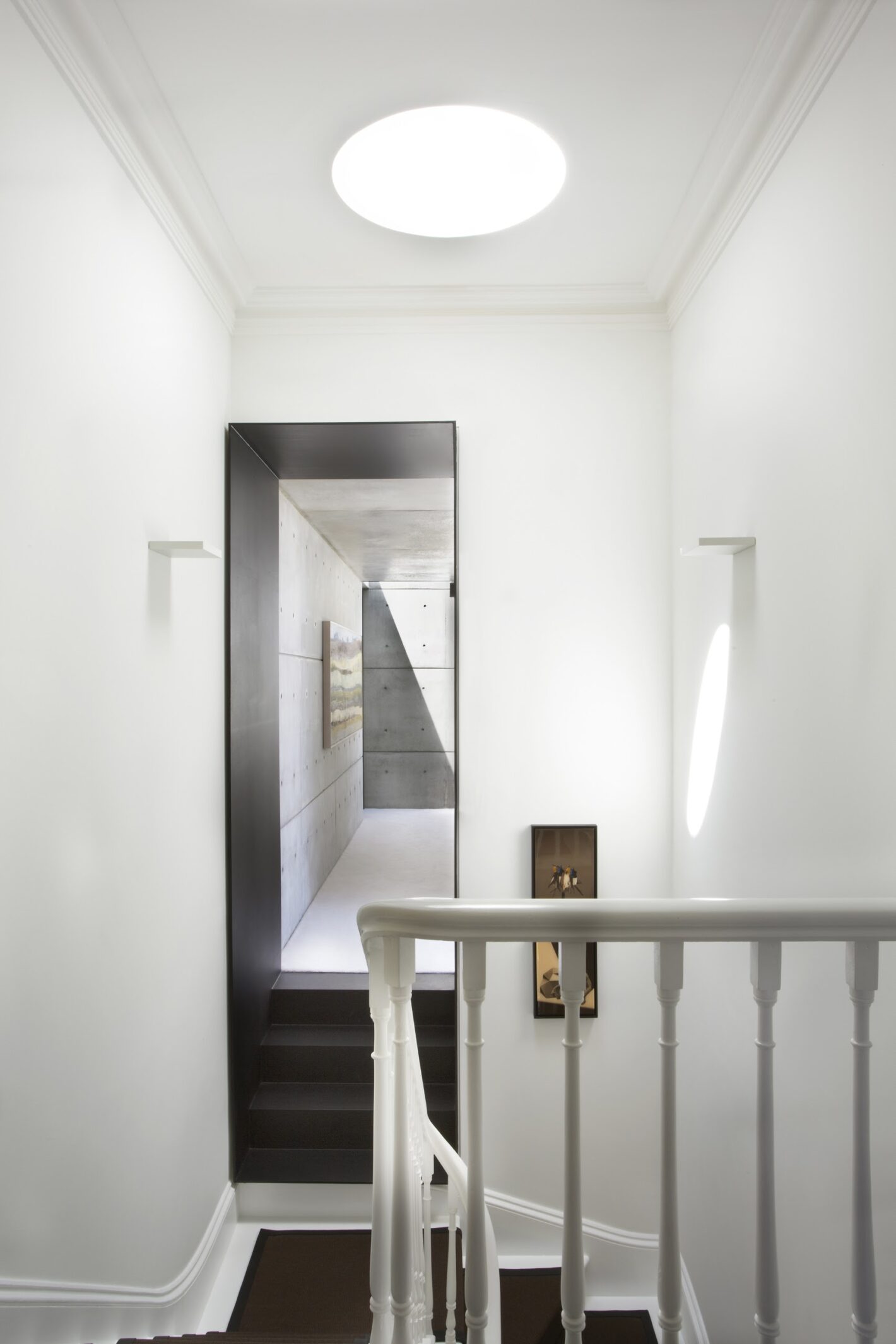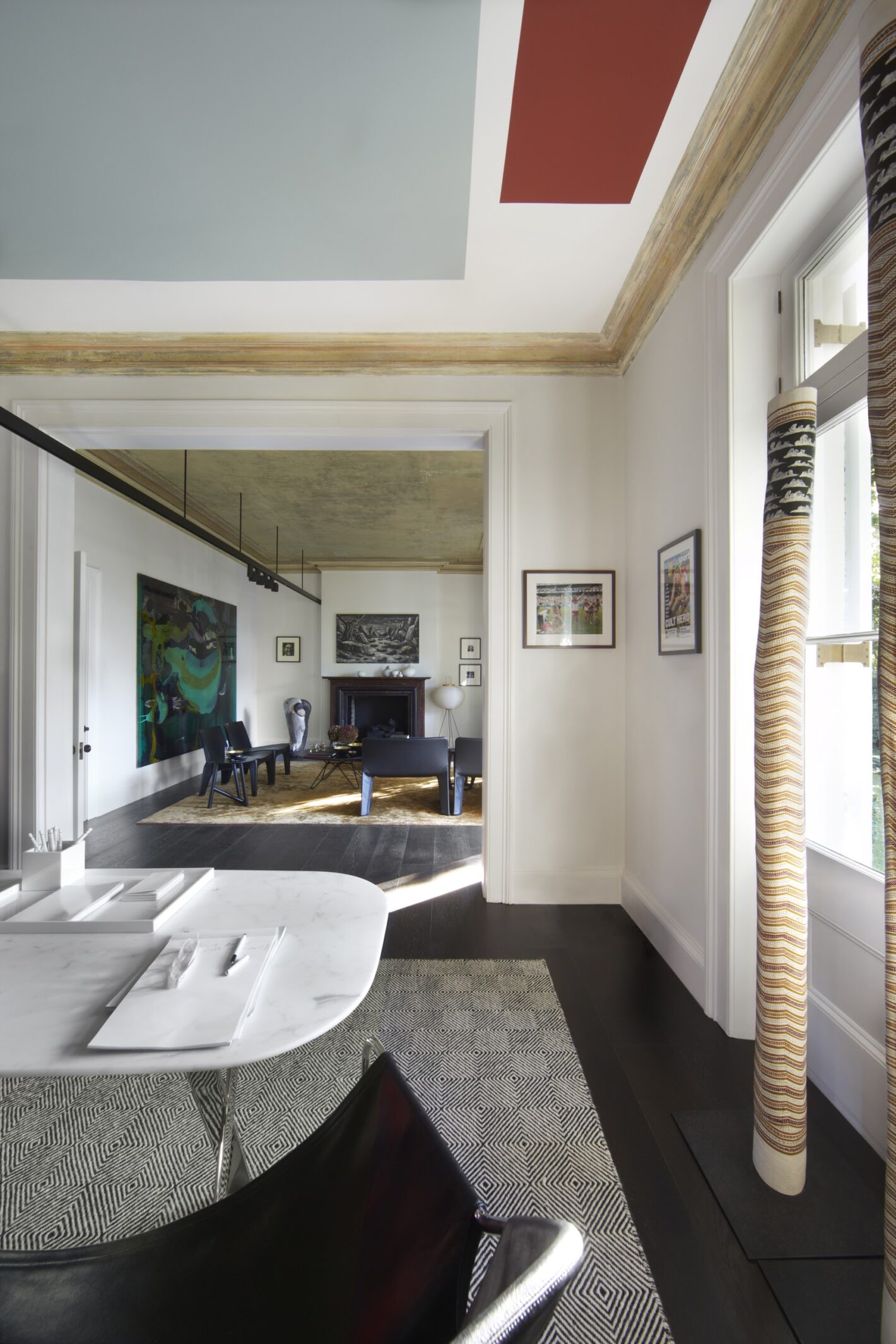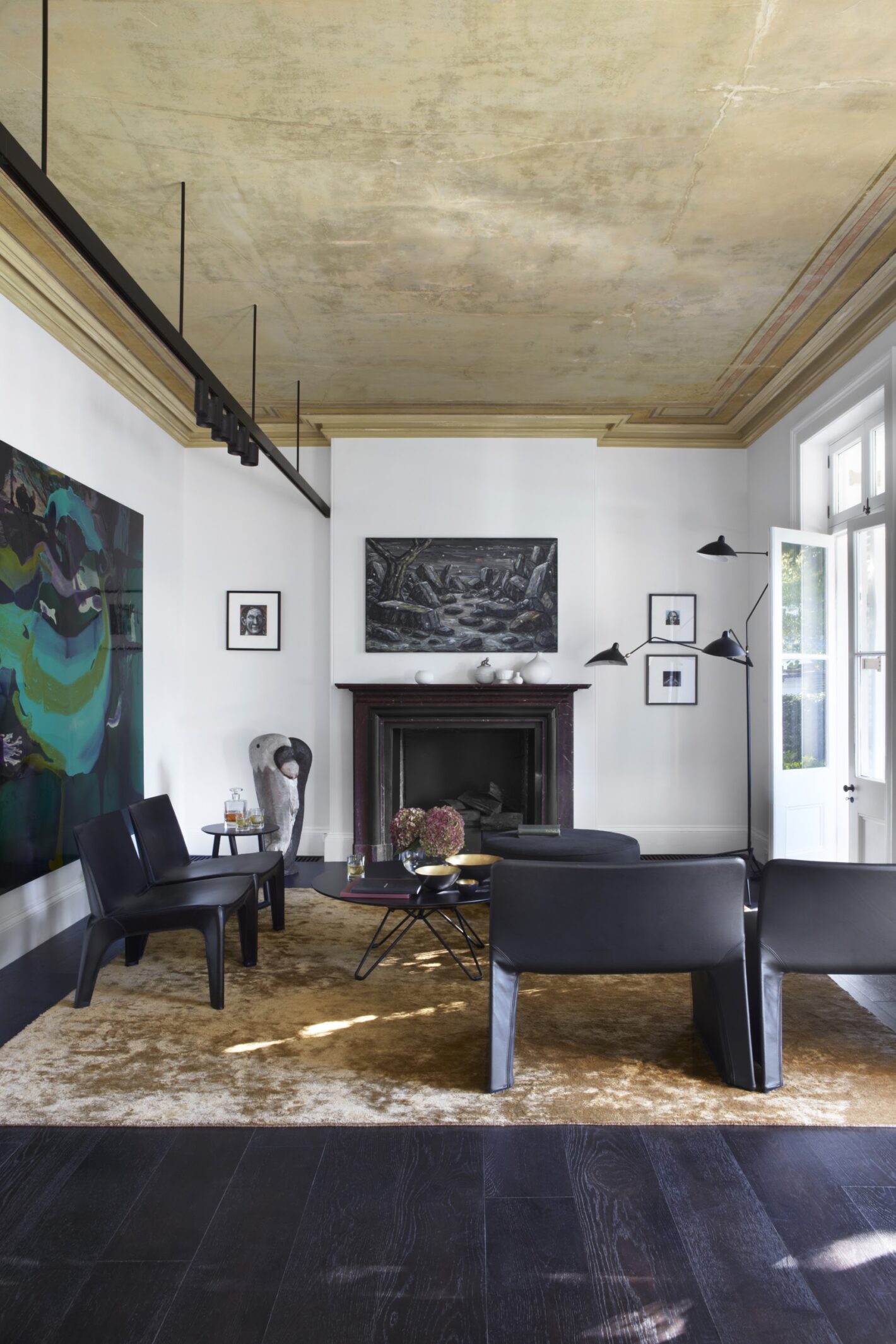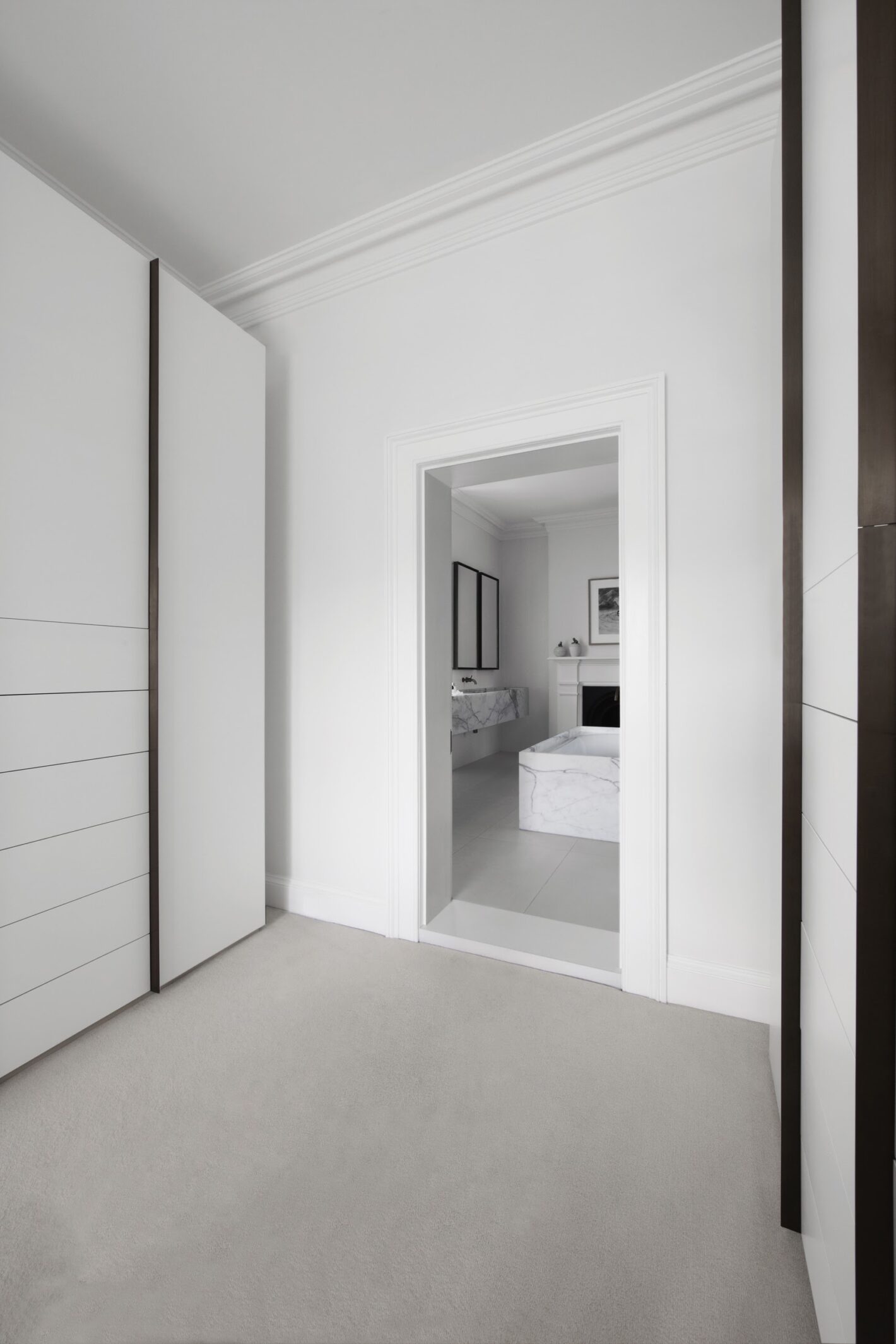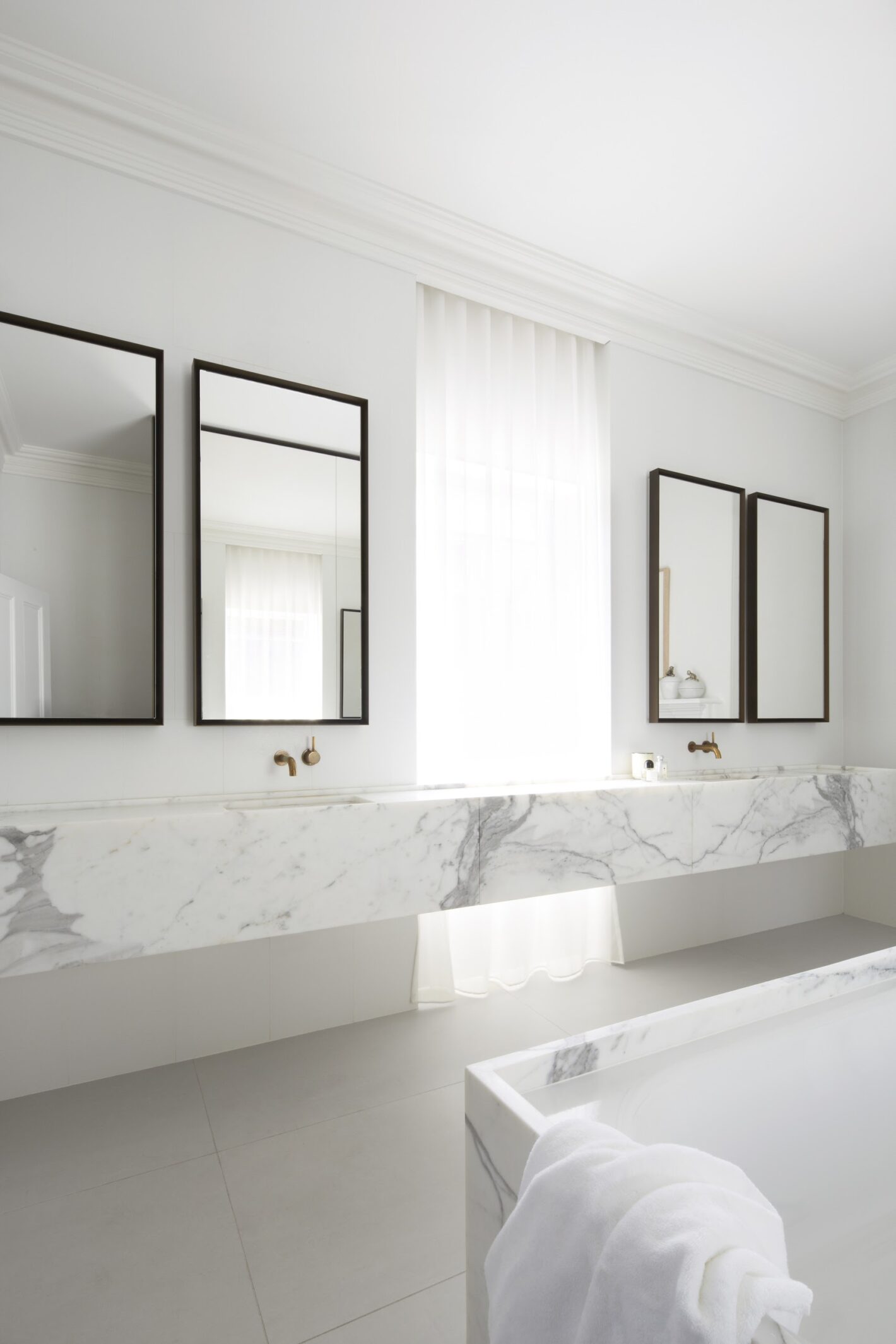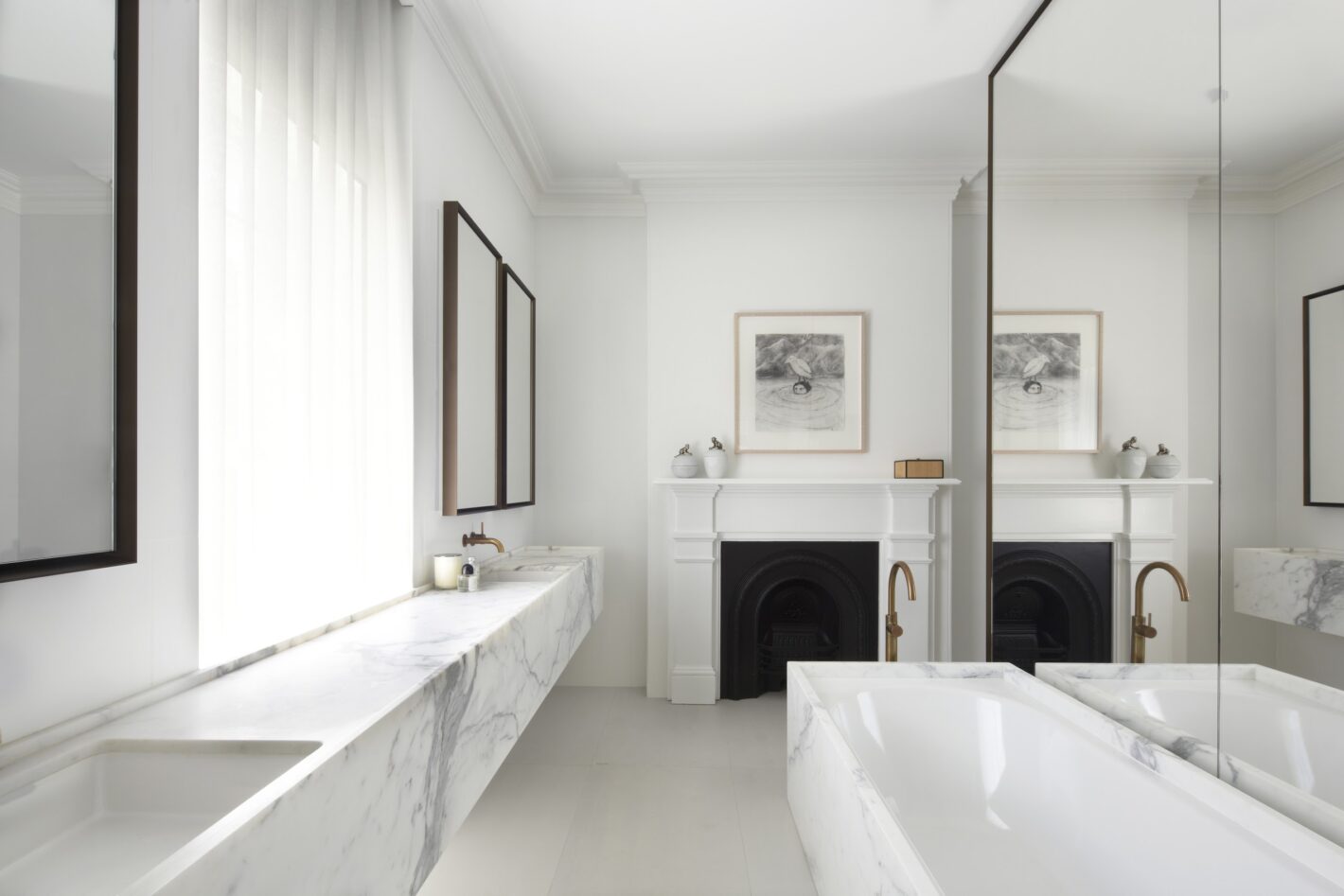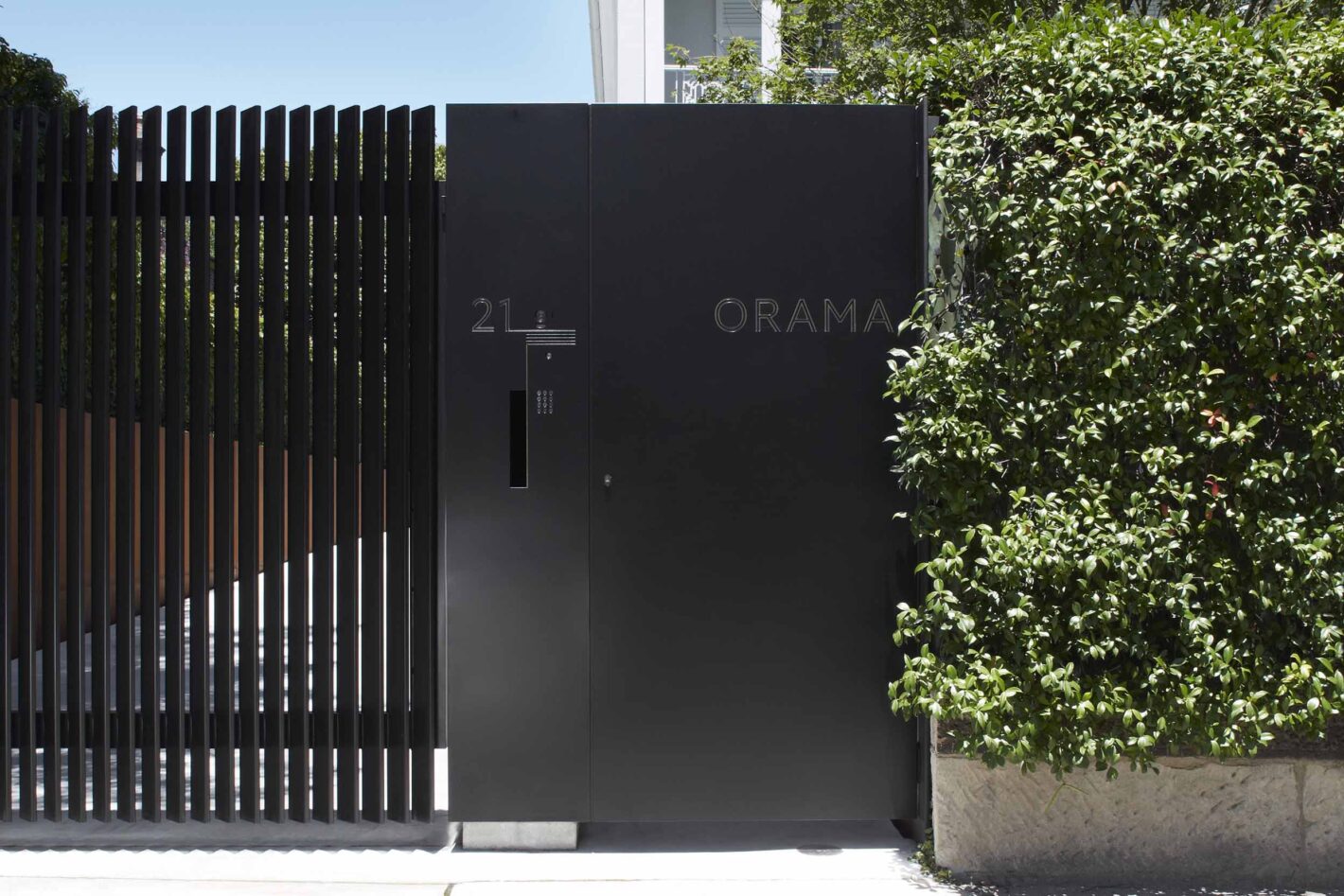The transformation of ‘Orama’, a gracious Victorian villa in Sydney’s Woollahra, involved the renovation and extension of a significant historic house. Our brief was to restore and extend the building to make a comfortable family home, while creating a framework for the client’s Australian art collection. Comprising two distinct halves, the project required distinct yet complementary approaches: the restoration of the original parts, and the construction of a new concrete and glass pavilion behind.
Expand ContentEffectively, the new wing pairs to the craft and substance of the original structure, but in a modern way. While the old building is rich in detail, the extension is bold and simple. The striking double-height concrete walls, when animated by sunlight, require little embellishment. Moreover, the walls and floors of the new volume extend out into the garden, making the landscape seem part of the interior. The material palette of concrete, glass, dark steel, and zinc beautifully complements the chic black-and-white scheme featured in the old house.
In response to the villa’s key architectural features, the restoration is luxurious in space and detail. To this end, the design approach updated the interiors with contemporary fittings and fixtures that contrasted with the traditional architecture. Deft modern interventions implanted into the old fabric – joinery and lighting – make the spaces interesting and functional and lend the house its layers of beauty.
Complementing the existing home, the new addition was designed to be minimal in form and detail, with textured raw concrete extending from the walls out into the garden, where it is melded to the pool, garden, lawn, and pebbled expanses.
A striking double-height living room forms the nucleus of the extension, where six-metre-high sliding doors on the northern side flood the room with light and overcome the limitations of the south-facing site. This living and dining room flows into a stainless-steel kitchen, and out to the garden and swimming pool beyond.
Environmentally sensitive elements are embedded in the old and new parts of the house, including hydronic floor heating and cooling, natural cross ventilation and an avoidance of air conditioning. These aspects are underpinned by exploitation of good solar orientation, thermally passive construction, and heat-exchange technology to make this a stable and comfortable environment year-round.
2015 Winner AIA National Architecture Award Residential Houses (Alterations & Additions)
2015 Winner AIA NSW Hugh and Eva Buhrich Award Residential Arch. (Altertaions & Addtions)
2015 Winner Woollahra Design Excellence Awards Heritage
2015 Winner Australian Interior Design Awards National Residential Design
2015 Winner Australian Interior Design Awards Best of State Residential Design
2015 Winner Belle Coco Republic Interior Design Awards Best Bathroom Design
2015 Commendation IDEA Awards Residential Single
